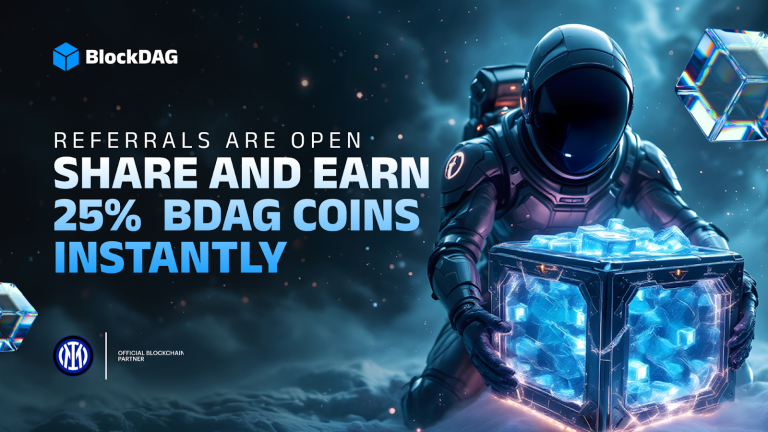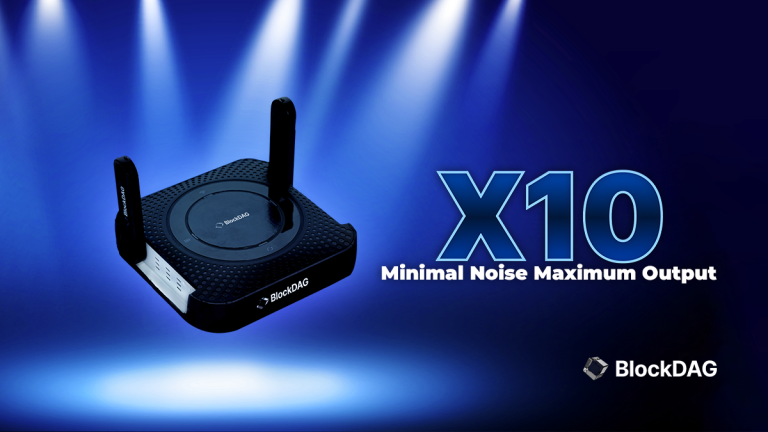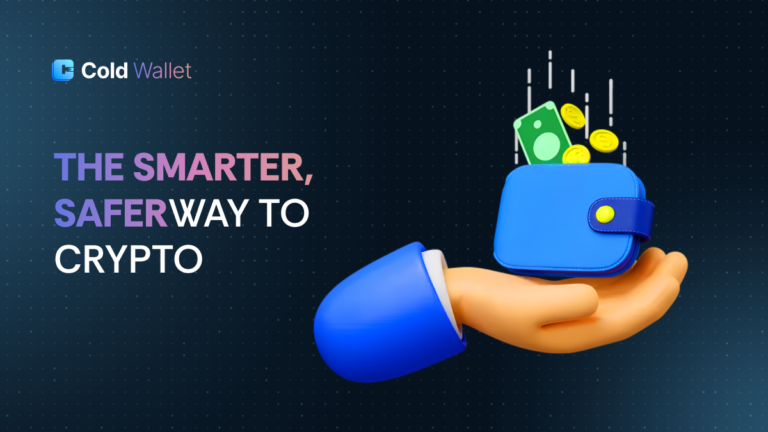BlockDAG Testnet Reaches 800 TPS, Surpasses Ethereum Speed
BlockDAG Beta Testnet Hits 800 TPS While Ethereum Holds at 15: Key Insights from the 7th AMA
BlockDAG (BDAG) has moved forward in a big way with its beta testnet, showing strong performance backed by real-world testing. With 34 active nodes, half operated by community members, it achieved 800 transactions per second (TPS) under real conditions. This isn’t a lab simulation or a theoretical figure; it’s tested throughput under real network stress. These results are verified, showing what the protocol can handle at this stage.
This development shows BlockDAG is not just an idea, it is growing into a working system, edging closer to full deployment. The team’s next target is to push the TPS beyond 2,000 for the mainnet launch, and then increase it even further to 15,000 TPS as scaling phases continue. The roadmap is steady and clear. Where some announce big goals but fall short, BlockDAG is showing its results first and building carefully toward larger milestones. This testnet achievement could mark the start of a Layer 1 capable of meeting high real-world demand.
Beta Testnet Achieves 800 TPS with Active Community Nodes
BlockDAG’s beta testnet release is more than just a technical step, it’s a clear example of how the network performs under real traffic. With 34 nodes active in the system, the environment was tough enough to run serious speed tests. Notably, half of these nodes were handled by community participants, adding real-world variety to the network’s conditions. Reaching 800 TPS with this setup lays down a solid path for the future.
The launch was a fresh rebuild, no old test data, no carryover from the alpha phase. Everything was redeployed with better block processing and network improvements. These updates led to both faster transactions and more stable validation times across all nodes. BlockDAG’s main engine, combining a DAG system and Proof-of-Work, is key to this success. By letting blocks process at the same time, it avoids common slowdowns and maintains both speed and strong consensus.
The 800 TPS result is not a promotional figure. It reflects what is actually happening on the network and shows how BlockDAG’s layered design performs under real testing. This puts it in a strong position, not just planning for the future, but starting to deliver on it.
How BlockDAG’s Real-World TPS Stands Apart from Other L1 Networks
The topic of TPS often dominates discussions about Layer 1 networks, but few platforms show consistent results outside of lab conditions. Solana often highlights a theoretical maximum of 65,000 TPS, but real-world performance usually stays between 4,000 and 5,000. Ethereum, which powers many DeFi projects and dApps, operates at around 12–15 TPS unless supported by Layer 2 rollups, which are still scaling. Meanwhile, Avalanche and Polkadot, despite using new consensus models, fall short of their top claims, with live averages of about 2.4 TPS and 0.07 TPS, respectively.
What makes BlockDAG’s numbers different is the honesty and hands-on testing. Rather than sharing huge projections, the team ran a beta test live with community participation and achieved 800 TPS using actual transaction loads. The aim for 2,000 TPS at launch is not just an ambition, it’s backed by what the beta has already proven. The longer-term goal to reach 15,000 TPS is a stretch, but it’s based on technical upgrades that are already outlined and in progress.
This approach puts BlockDAG in a stronger position. It’s not making big promises just to grab attention or boost early momentum. Instead, it is setting realistic targets based on tested results and sharing them openly. In contrast, many other Layer 1 platforms tend to announce bold numbers early on and only show progress much later, if they manage to deliver at all.
How Community Testing Strengthened BlockDAG’s Beta Rollout
One of the highlights of BlockDAG’s beta testnet has been the major role played by its community. Instead of keeping the testing behind closed doors, BlockDAG opened node operations to outside participants. This helped the network face real-world challenges, testing its limits across different setups, traffic loads, and user conditions. As a result, the team collected better data, found issues faster, and gained a clearer picture of real network behavior.
A key problem that came up was a memory leak, which only became visible as more community nodes joined the network. This was not detected during internal tests but was spotted quickly once outside operators came in. The development team responded by releasing an updated version of the node software and walking users through the patching process. What could have been a major flaw instead became a chance to improve the network under real stress.
This shows that for BlockDAG, decentralization isn’t just a feature to promote, it’s built into how they work, test, and grow. The testnet remains open and active, inviting anyone to participate and contribute. This hands-on involvement is helping build a stronger, more reliable network and is steering clear of the typical mistakes that come from closed-off testing that often leads to rocky mainnet launches. As BlockDAG moves closer to mainnet release, the community will not just observe, they will help run it.
BlockDAG’s Roadmap to 2,000+ TPS and Future Scaling
The beta testnet marks only the beginning. BlockDAG’s plan is to reach 2,000 TPS at launch and eventually grow to 15,000 TPS as the system evolves. This is not just an ambitious goal, it’s a clear strategy backed by technical and operational progress. The hybrid design, mixing DAG-based parallel validation with Proof-of-Work for trust, sets the stage for this level of growth.
Beyond its core structure, BlockDAG is building the necessary tools to support heavy traffic. The current beta includes a real-time blockchain explorer, an easy-to-use token and NFT creation tool, and early setups for smart contract deployment. These features are not just extras, they are vital for encouraging developers and enabling user activity once the mainnet is live. A complete blockchain audit is also planned for the next update, adding another layer of readiness before the official launch.
Scaling toward 15,000 TPS will need better infrastructure, smarter validator setups, and more global node participation. The roadmap includes DeFi services, built-in staking systems, governance frameworks, and cross-chain bridge support. Each piece is designed to boost network use, and BlockDAG’s flexible system makes it easy to add them as the network grows.
The coming months will focus on refining and delivering. The base for performance is already in place, the next steps are about building upward without losing speed, accessibility, or reliability.
Important Takeaways from BlockDAG’s Beta Phase
BlockDAG’s beta testnet sends a strong message: performance is no longer just a goal, it’s happening now. With 34 active nodes and 800 TPS achieved under real conditions, the network has moved from plans to proven results. It sets a fresh standard for Layer 1 platforms, showing that fast, secure, and scalable performance is possible with a hybrid DAG and Proof-of-Work setup.
The beta phase, from community-run nodes to quick fixes on performance issues, has been both a technical and operational win. With a launch goal of 2,000 TPS and a roadmap aimed at reaching 15,000 TPS later, BlockDAG is not only meeting expectations, it’s getting ready to move beyond them. In a space often filled with big promises and future goals, BlockDAG offers something real to see and real to build on.
Whether you’re a developer, a validator, or simply curious about new networks, BlockDAG’s open beta gives a glimpse of what a strong next-generation Layer 1 can look like when solid planning and real-world testing work together.
Presale: https://purchase.blockdag.network
Website: https://blockdag.network
Telegram: https://t.me/blockDAGnetworkOfficial
Discord: https://discord.gg/Q7BxghMVyu
| Disclaimer: The text above is an advertorial article that is not part of bitcoininfonews.com editorial content. |






